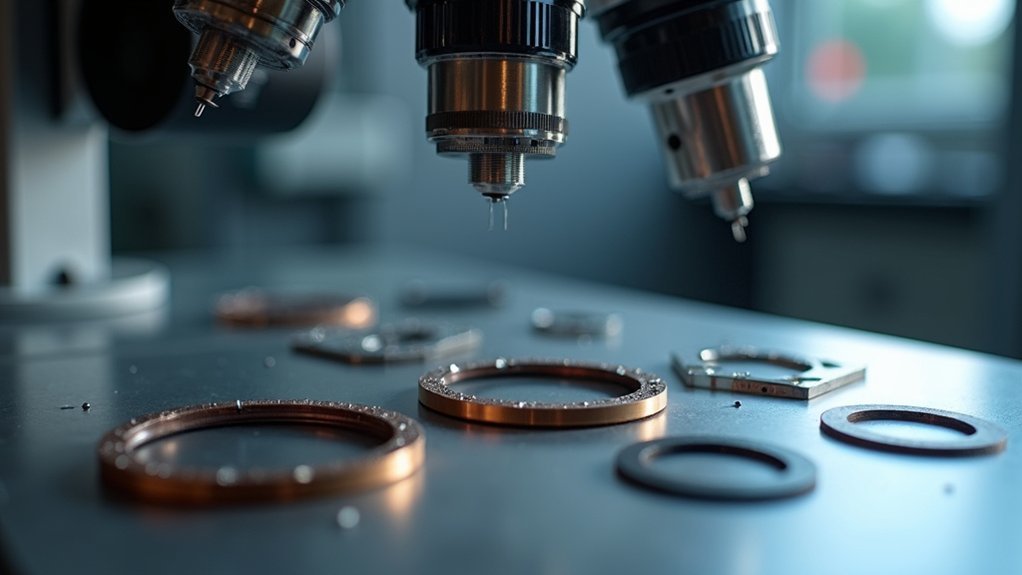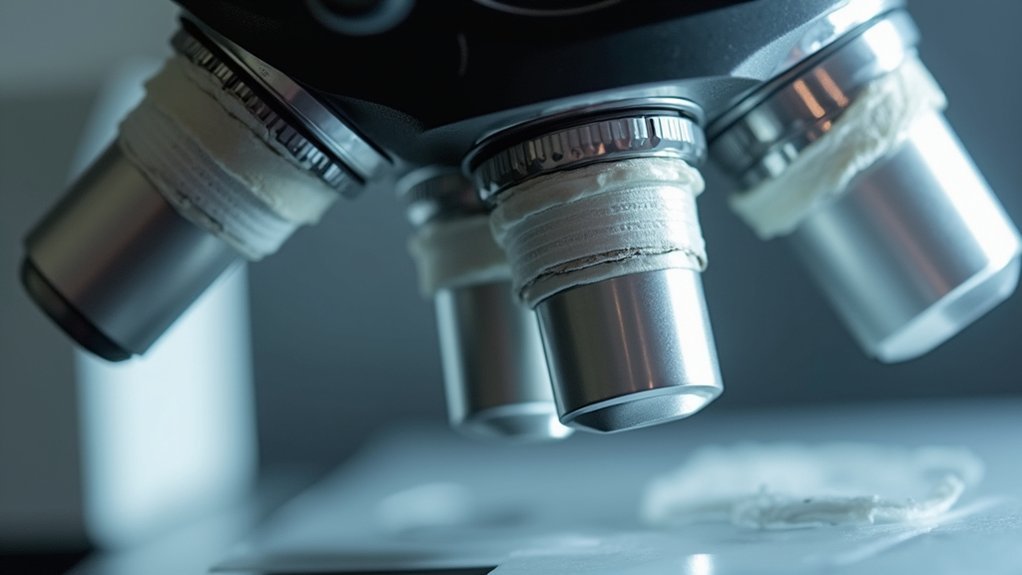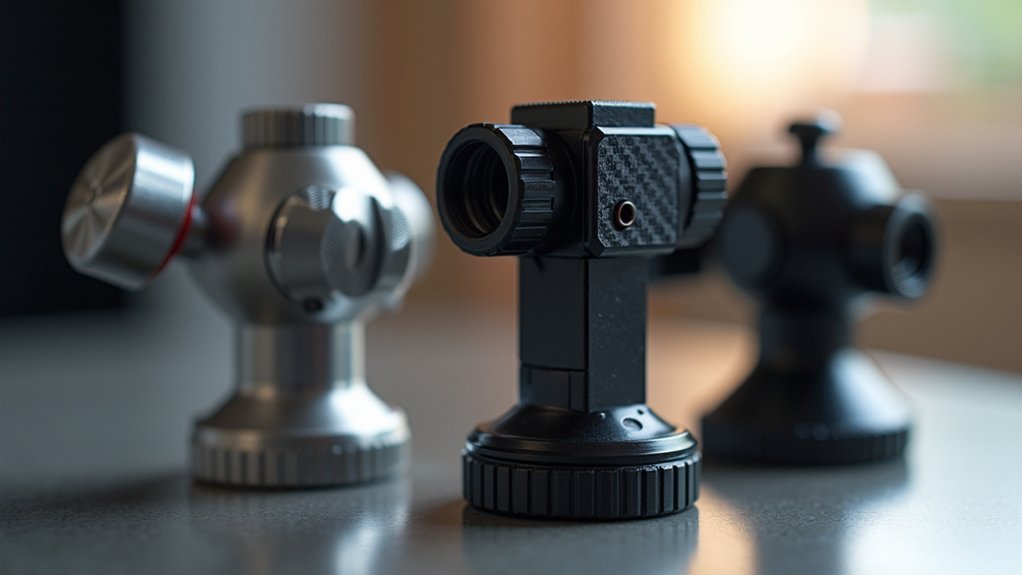To fix loose camera adapters, try these three proven solutions: 1) Apply thin PTFE sheets (0.005-0.01″ thick) as precision shims to eliminate movement while maintaining focus. 2) Adjust internal adapter flanges using a flat eyeglass screwdriver to increase tension at connection points. 3) Wrap PTFE tape around connection surfaces to fill gaps and prevent rotation. These simple fixes will save you money while greatly improving your image stability and quality. The following techniques work for microscopes and other optical systems.
Precision Shimming Techniques for Microscope Camera Adapters

Microscopy enthusiasts know that proper camera mounting can make or break image quality. When you’re dealing with a loose fit between your Mount Adapter and the lens, precision shimming offers an effective solution.
For best results, cut adhesive PTFE sheets (.005″ or .01″ thick) to match your adapter’s mounting face. These thin shims eliminate movement during operation while maintaining infinity focus. You can use PN 2208T21 for minor adjustments or PN 2208T111 when more significant correction is needed.
For brass mounts, carefully insert a thin screwdriver into existing cuts to slightly enlarge the diameter. Some photographers even use aluminum foil as an improvised shim with surprising success.
Remember to regularly check shim integrity, as deterioration can compromise optical performance.
These small adjustments make a remarkable difference in focus accuracy and overall image quality.
Modifying Adapter Flanges to Eliminate Microscope Mount Wiggle
When your camera adapter develops an annoying wiggle, you don’t necessarily need to purchase a replacement. The solution often lies in the adapter’s flanges—the spring mechanism that creates tension and stability in your microscope mount.
Don’t replace that loose camera adapter—adjust its internal flanges for a stable microscope mount again.
To fix a loose adapter, insert a flat eyeglass screwdriver into the flange slits and make minor adjustments to increase tension. Focus on the gap between flanges, as this is the critical source of stability for the camera connection.
Make even adjustments to all three flanges for ideal tension distribution. Don’t over-tighten—just enough to eliminate wiggle while maintaining smooth movement.
Regular checks of these adjustments will prevent light leakage and focus problems, ensuring your camera mount remains secure during precision work.
PTFE Tape Solutions for Securing Loose Microscope Camera Connections

Three simple strips of PTFE tape can transform your loose microscope camera connection into a rock-solid imaging platform. This inexpensive solution acts as a shim to eliminate unwanted movement between the camera and mounting interface.
| Application Area | Benefits |
|---|---|
| Adapter threads | Prevents rotation |
| Mounting flange | Fills small gaps |
| C-mount interface | Stabilizes connection |
| Eyepiece adapters | Reduces vibration |
| Dovetail joints | Guarantees precise alignment |
Apply a thin layer (0.005-0.01 inches thickness) around the connection between the camera and microscope adapter. Cut the PTFE tape to match your specific mounting interface shape, making sure it doesn’t interfere with critical components. For persistent loose mount issues, you can add additional layers until you achieve the perfect fit. Check the tape periodically for wear and replace as needed.
Frequently Asked Questions
Do Lens Mount Adapters Affect Quality?
Yes, lens mount adapters can affect quality. Loose adapters cause frame shifts, focus inaccuracies, and light leakage. You’ll notice better results with higher-quality adapters that provide tight fits and consistent performance.
How to Attach a Lens Adapter?
To attach a lens adapter, align it with your camera’s mount, twist until it clicks, then mount your lens to the adapter. Confirm everything’s clean and check for secure connection after installation.
What Size Is the Thread on a Camera Lens Mount?
The most common thread size on camera lens mounts is 1/4-20, though you’ll find 3/8-16 on some professional equipment. Always check your specific camera’s manual as thread sizes vary between different systems.
Can You Stack Camera Adapters?
You can stack camera adapters, but it’s generally not recommended. Each added adapter increases risks of misalignment, light leakage, and focus issues. If necessary, use only high-quality adapters and test your setup thoroughly.
In Summary
You’ve now discovered three effective solutions for those frustrating loose camera adapters on your microscope. Whether you choose precision shimming, flange modifications, or PTFE tape applications, you’ll eliminate image drift and improve your photomicrography quality. Don’t let loose connections compromise your scientific documentation anymore. Apply these simple fixes and you’ll immediately notice sharper images and more reliable microscope camera performance during your research sessions.





Leave a Reply